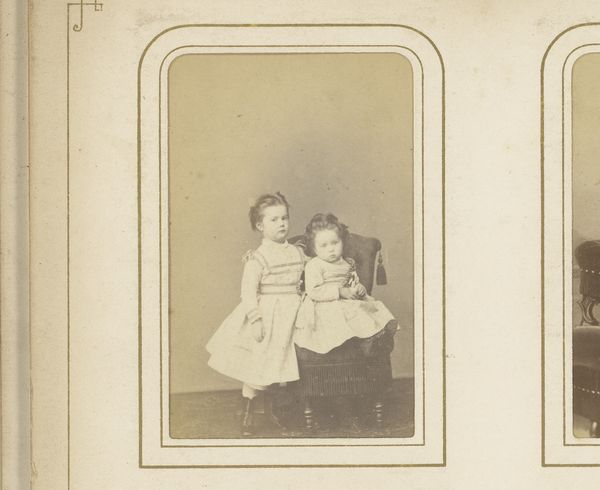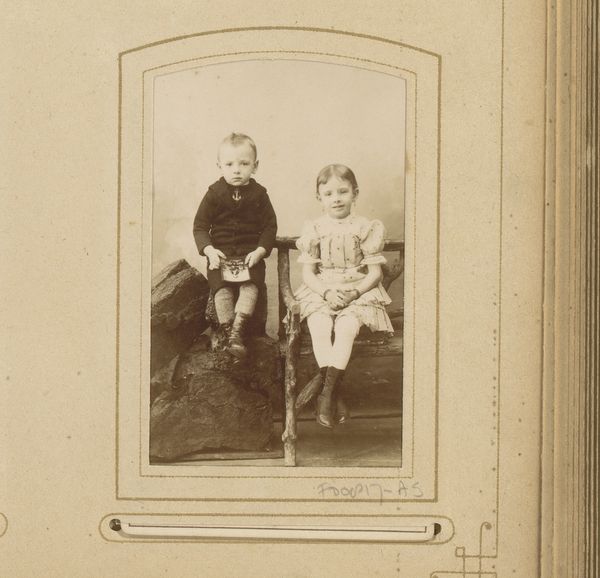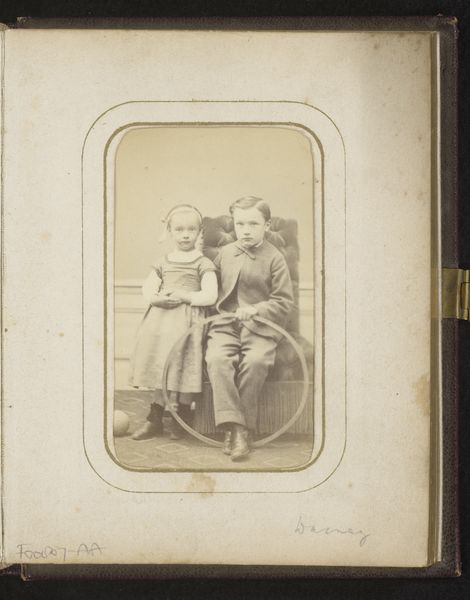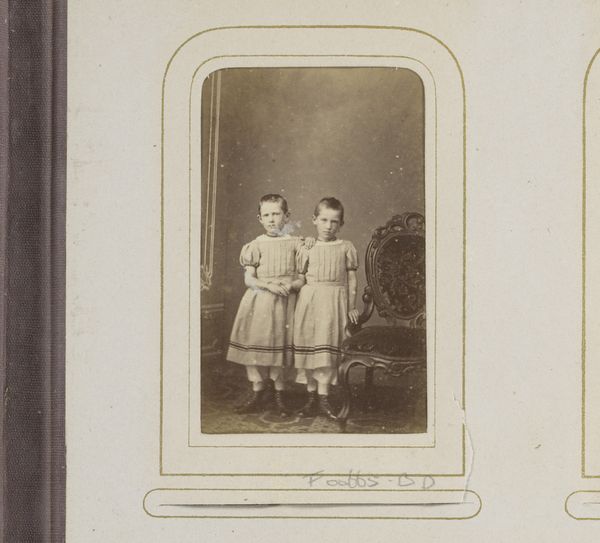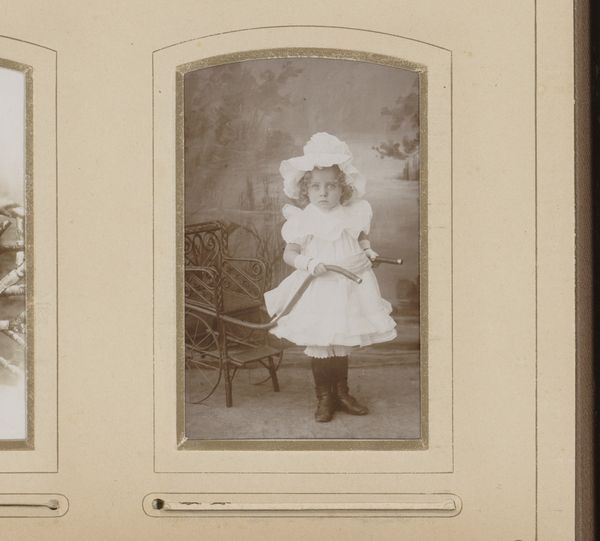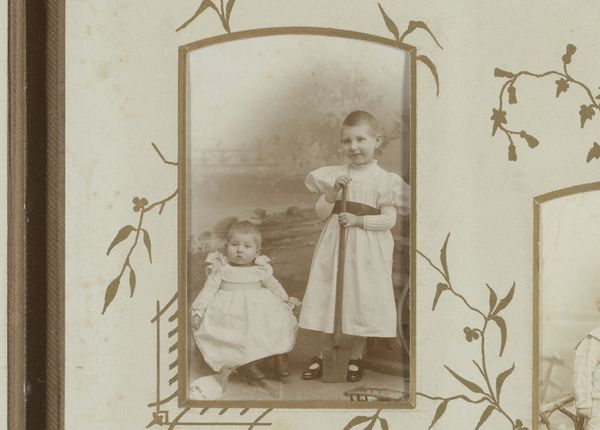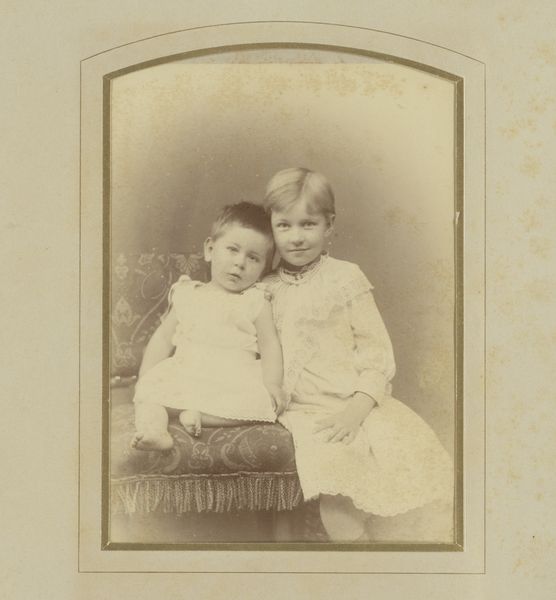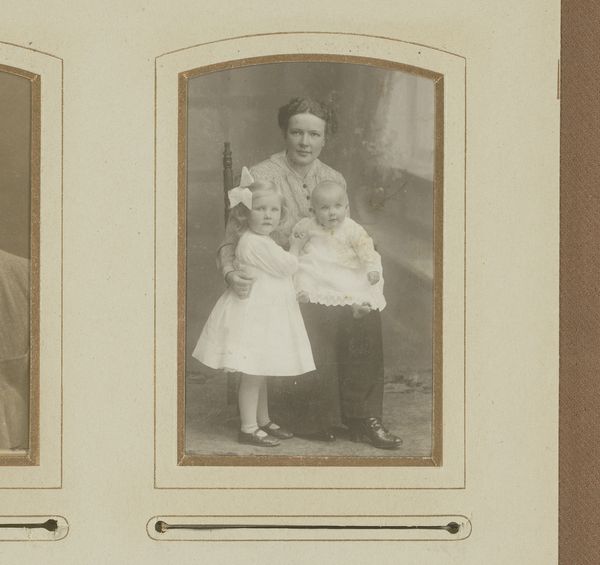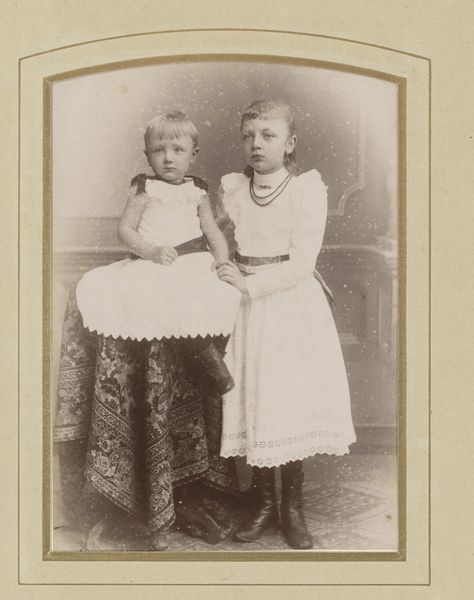
photography
#
portrait
#
pictorialism
#
photography
#
genre-painting
Dimensions: height 83 mm, width 53 mm
Copyright: Rijks Museum: Open Domain
Curator: I find the softness here so compelling; the image feels like a whispered secret. Editor: There's definitely an intimacy; it gives the impression of a shared secret. In this photograph, titled “Portret van twee meisjes,” which roughly translates to “Portrait of two girls,” by W.G. Kuijer & Zonen, sometime between 1885 and 1906, we see two young girls, frozen in time. One is seated in a wheeled chair, the other stands beside her, almost protective. Curator: That support resonates so deeply. Note how she rests her hand almost paternally on the other’s shoulder, echoing a Madonna and Child posture – the protector, but also the one who perhaps sacrifices… a theme that threads across so much art, but feels different when we transpose childhood innocence onto it. There is also a sense of performativity to the backdrop. Editor: The photographic portrait, gaining popularity in this period, was intrinsically tied to the rising middle class. These formal poses communicated respectability and social standing. The healthy child implies future productivity. Yet disability, often stigmatized, is visible in this wheeled chair, raising some complex ideas here. Curator: I wonder about the intended viewing public here, in the context of symbols and meanings, the toy itself, wheeled versus not, perhaps the hockey stick also implies future capabilities that both are perhaps going to embody. What does this collection of symbolism propose? It creates an allegory for future projection as opposed to solely one of identity or presenthood. Editor: Exactly, are we supposed to empathize with a vision of normative societal expectations, which, when considering gender norms of that period, would require unpacking so much loaded imagery. A young girl burdened in youth could easily become a grown woman facing more oppression, so this seemingly gentle portrait of domesticity also feels rife with tension. Curator: Yes, I suppose I keep coming back to this quiet stillness, to the fact of its existing within that complex intersection that is itself part of its story… We seem to place it at a nexus point between social record and poignant mystery. Editor: Yes, absolutely. Perhaps that tension, between representation and hidden narrative, is what continues to captivate.
Comments
No comments
Be the first to comment and join the conversation on the ultimate creative platform.
